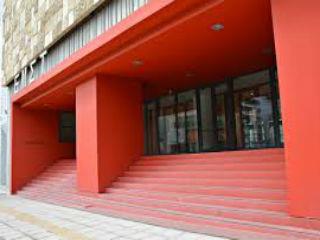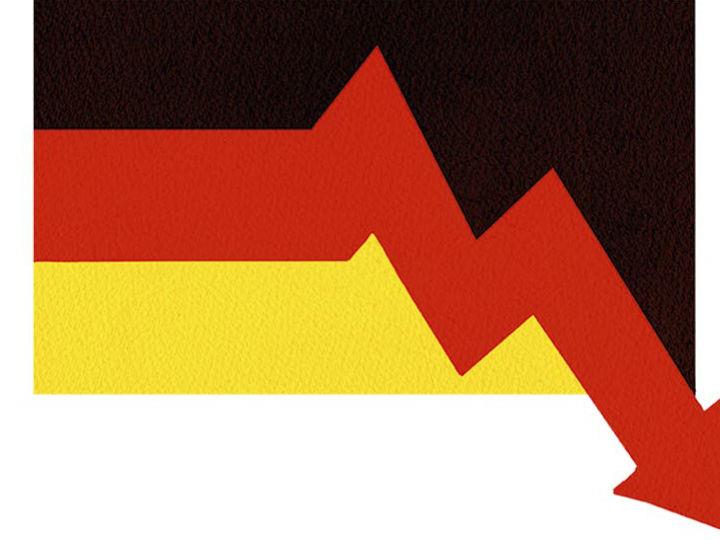by
Alexandra Papaisidorou*
Τhe Museum of Contemporary Arts rolls-out the thread of art and pioneering. We caught up with
Katerina Koskina, the Director of EMST and a person with strong senses, thought of prospect, knowledge and passion for her work. In a discussion of all in and outs of EMST, the resume stands on how the addition of each single work of art to a collection can offer new platforms for thinking and seeing differently along with the efforts to look backwards across the history of art and then building an extrovert attitude.
The much-debated opening of
EMST during a harsh period of Greek environment proves that inspiration and vision always keeps the flame alive and fills up the calendar not only with admirable exhibitions accompanied by large numbers of visitors but mainly with hope and power for the coming years. Greece never stops demonstrating such unparalleled commitment to the arts, and the city of Athens is seen globally as an always thriving artistic hub with EMST to take a long-awaited step forward to this cultural waltz.
EBR:
The National Museum of Contemporary Art has many permanent (temporary) exhibitions of a great success. “EMST at DOCUMENTA 14” was my first thought over that, could you please specify a few points about the criteria of choosing collections and exhibits and what factors make some of them to be some remarkable?
K.K.: 2017 was significant for the National Museum of Contemporary Art, Athens (EMST). It was marked by the final consignment of its new building and the almost immediate partial operation of its temporary exhibition spaces, with the exhibition Urgent Conversations: Athens- Antwerp that was held in collaboration with the Museum of Contemporary Art, Antwerp M HKA. The exhibition was inaugurated on 31.10.2016 simultaneously with the new EMST series EMST in the world, which is realized on an annual basis since then.
The second exhibition of the series was realized through the collaboration of EMST with documenta 14 and lasted from April to September 2017. EMST and documenta collaborated by utilizing the wish of an organization to “learn from Athens” and the intention of the other to “open to the audience”, so they concluded to a common decision of a double relocation: EMST firstly became the main exhibition space of documenta 14 in Athens and, afterwards, Fridericianum in Kassel became the temporary home of part of the Museum’s collection, that was presented under the title ANTIDORON. The EMST Collection. The exhibition attracted more than 850.000 visitors. The same part of the collection, enriched, will be exhibited in the permanent collection spaces of EMST in Athens, when the Museum will officially open its doors.
By making real its intention to be extrovert the Museum was mostly active abroad.
EBR:
How has your love for art been originated?
K.K.: Since I was very young I loved art. I have dedicated my life to it, since I believe that it plays an important role in everything.
EBR:
How can the separate units of thematic areas into the museum influence the visitors’ preferences? For example, there are some exhibitions or collections more popular than others, how do you handle it?
K.K.: When we will install our permanent collection we will notice its influence to our visitors. We took a great feedback though from the exhibition ANTIDORON. The EMST Collection at Fridericianum in documenta 14, which was a presentation of a part of my Museuological Study that will be presented when all the prerequisites meet and the collection will be installed in the permanent collection spaces. Then we know the visitors’ reaction and ideas. We want to be extrovert and be connected with our audience.
EBR:
What is worth visiting the National Museum of Contemporary Art for the current period?
K.K.: This period we present an exhibition of the Greek section of the International Association of Art Critics (AICA – Hellas) titled Theorimata was inaugurated for the first time at EMST. The promotion and support of the current Greek artistic production through scientific, theoretical and artistic research is the foundation of this new project of AICA – Hellas, aiming at a biennial repetition. Scholars of art history, critics, curators and artists come into dialogue and collaborate around a theme emerging from of contemporary concerns. The inauguration of this exhibition series at EMST signals the importance of joint creativity and collaboration between theorists and artists.
We also prepare more temporary exhibitions for the next period, based on our policy for collaborations and extraversion. We plan to present more exhibitions under the series EMST in the world.
EBR:
What are the future goals for EMST?
K.K.: The strategic objective of the Museum and its prerequisite remain, of course, its full operation, which, if the present conditions apply and the commitments are fulfilled, can be inaugurated within 2018. EMST will thus be able to continue its outreach and synergies program which began dynamically in 2016, and focus further on research and the creation of activities for the promotion of the contemporary artistic production in Greece, through its institutional role.
EBR:
What are the visiting figures of EMST each year?
K.K.: Overall, since its move to its new building and until today, it is estimated that the visitors for the activities of the synergies of EMST abroad are more than 1.500.000. After our full operation in all our spaces we will have a clearer picture regarding the Museum visitors. We plan to do a survey to understand better and deeper our audiences. But our full operation is a prerequisite for all these steps.
EBR:
How can visitors be more updated EMST news?
K.K.: We try to keep updated our visitors in various ways. Our website is new and constantly gets updated, we are in the process of transferring all the material from our old to our new website, everyone can be updated via our Newsletter, we have very active social media and we try to inform our audience via all these different channels.
EBR:
Under which efforts and funds can large exhibitions be developed?
K.K.: Except for the annual funding from the State, we make a constant effort of finding new sources of funding. We try to find sponsorships for our big and small projects and for the enrichment of our collection. It is a process that never ends and keeps us alert.
EBR:
What can someone attend during a first visit in EMST?
K.K.: Despite its nomadic history, EMST is located in a new beautiful building that the audience is curious to visit. Via our temporary exhibitions and our parallel activities and programs, we want the audience to have a pleasant experience when visiting us. Of course, with our full operation the experience will be different, more completed. Moreover, with the operation of the cafe and the restaurant, the visitors will have the opportunity to spend more hours within our space. Museums today operate towards this direction; they are not boring, they are places that offer a pleasant experience and that you want to visit again.
EBR:
Do you have activities for kids? Could you make us a brief description?
K.K.: Within the frames of the EMST temporary exhibitions, educational programs special designed for school groups of primary and secondary education are realized. Through dialogue, active participation and artistic activities the programmes aim at contributing to the discovery of and familiarization with contemporary art and to the understanding of the exhibition and its artworks.
EBR:
Financial crisis has also a great influence on the EMST affairs?
K.K.: Of course it influenced EMST and it caused further delays on our full operation. On the other hand it made us being more innovative and extrovert. It is a miracle we operate, even partially, and that despite all these difficulties, we move forward very fast.
EBR:
Which are the reasons for someone to visit the EMST?
K.K.: It is a Museum that despite its history makes a new start in its new building and it makes its steps for a more extrovert international direction. It is very “attractive” to follow these steps and observe an institution unveiling its core, its collection in its new permanent space although it has a history behind it. In addition, contemporary art is always interesting and the audiences that choose to discover it are increasing, this is my feeling from our Museum and all the other Museums and contemporary spaces I visit abroad.
EBR:
What is the promotion of the museum abroad?
K.K.: Last year, our activity abroad made EMST quite popular internationally. We were a proposed destination in many international media. We try to maintain this positive atmosphere, since international press is still interested in the Museum and in the city of Athens as a destination. We created a good base and with our full operation we will further develop our international profile.
EBR:
How could museums consist the tool-box of the promotion targeting in cultural tourism for Greece?
K.K.: Museums could and should play a central and vital role for the promotion targeting in cultural tourism in Greece. Traditionally, Museums of every field, are the first spaces that a tourist puts in his to- do list when visiting a city, a country. We should further develop our policy towards this direction and further support the promotion of the museums. For example, lately Athens has attracted international interest and has become a destination. The Museums of Athens should take advantage of this interest.
EBR:
Do you consider that our country makes some effective efforts on that?
K.K.: It does, but we should make more efforts, by creating networks and support each other. EMST is already part of different networks. We should work for our development as an organization, but never forget that we are part of a bigger system of different organizations. We should communicate, discuss, propose and act for ourselves as well as a part of a bigger plan, which is the promotion of our country. Especially during these difficult times of crisis, Museums and cultural organizations have a lot to offer.
EBR:
Do you believe that EU has contributed to a cultural integration?
K.K.: Yes, of course. Not only by the important financial support it offers via its different programs, but also by creating networks that encourage collaborations and cultural exchanges.
EBR:
Is there a European culture, in your opinion?
K.K.: The European culture is what every European citizen carries. Behind our nationality, we are European citizens and we belong to the big European family, which gives us many opportunities for connectivity. We act individually and collectively at the same time
*Editor-at-large & PhD candidate of European & International Relations




 By: N. Peter Kramer
By: N. Peter Kramer

